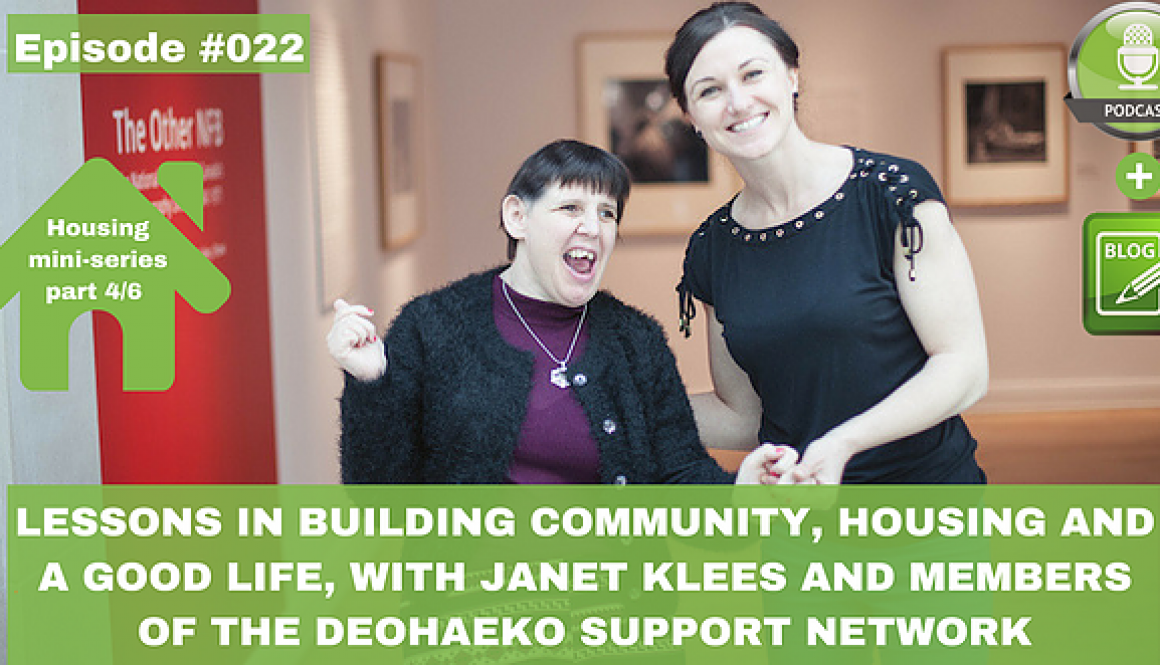Lessons in Building Community Housing and a Good Life
Eric Goll’s podcast, “Empowering Ability” is showcasing a 6 episode mini-series on housing for people with a disability. In a recent episode, Eric interviews Janet Klees, Executive Director of Durham Association for Family Respite Services, about her earlier work with Rougemount Co-operative Housing, and the Deohaeko Support Network– a co-operative housing project led by families that has embodied diversity, inclusion and community since its inception in the mid 1980’s.
Listen to the podcast and see the blog here!
Hear the story of the Rougemount Housing Co-operative & the Deohaeko Support Network, learn what intentional community is and how to build it, learn the key factors that made Rougemount a success for people with a disability, and get a different perspective on creating a home for people with a disability. The first third of the podcast focuses on Deohaeko and Rougemount, the second third is mainly about intentionally built communities, and the final part focuses on the housing work happening through DAFRS.
The history of how and why community housing, like Rougemount Co-Operative Housing, was and continues to be a successful model is important when contemplating options for home today. The lessons learned from this success are of particular interest when imagining and designing next steps for home for a person with a disability. Eric notes some lessons learned regarding the Deohaeko group:
5 Essential tips in shaping aspects of the community, invisible support, and making principled decisions that ensure that people are seen as ordinary neighbours sharing much common ground.
1. Diversity. Dedication to supporting, shaping, and holding a very typical community – less than 10% disability. It is the diversity of the co-op that makes it work. Diversity first before building intentional community.
2. Where people lived. The people with disabilities living at Rougemount live in apartments across the building, not segregated on one floor. This allowed people to be known by their individual identity, not just by the identity of their disability.
3. Support identified by their name, and deflected to person and their interests. We helped new support workers be thoughtful on how they introduced themselves. When support introduced themselves they 1) identified themselves by their name only, 2) directed the conversation back to the individual they were supporting, and 3) spoke to that individual’s interest. (Example: “Hi I am Sorida, I’m hanging out with Tiffany today. We are headed to the art gallery today – have you seen her art? You should come over to her apartment sometime and see her art.”)
4. Discouraged segregated activities. When new committees were starting we had lots of conversation about who would participate. We thought about who from Deohaeko would participate in committees and chose not to have too many people with a disability on one committee because it then becomes difficult for people to build relationships.
5. No shared support. The reason is that the families didn’t want people to see the same supporter with different people with disabilities because then people look at people with disabilities as all the same. Rather than saying different people need different kinds of support. Even in a crisis support wasn’t grouped. We figured different layers of support that would come forward in these situation. We really focused on people having their own unique and individual lives.
*All of this is to focus on creating natural relationships, and it works.

